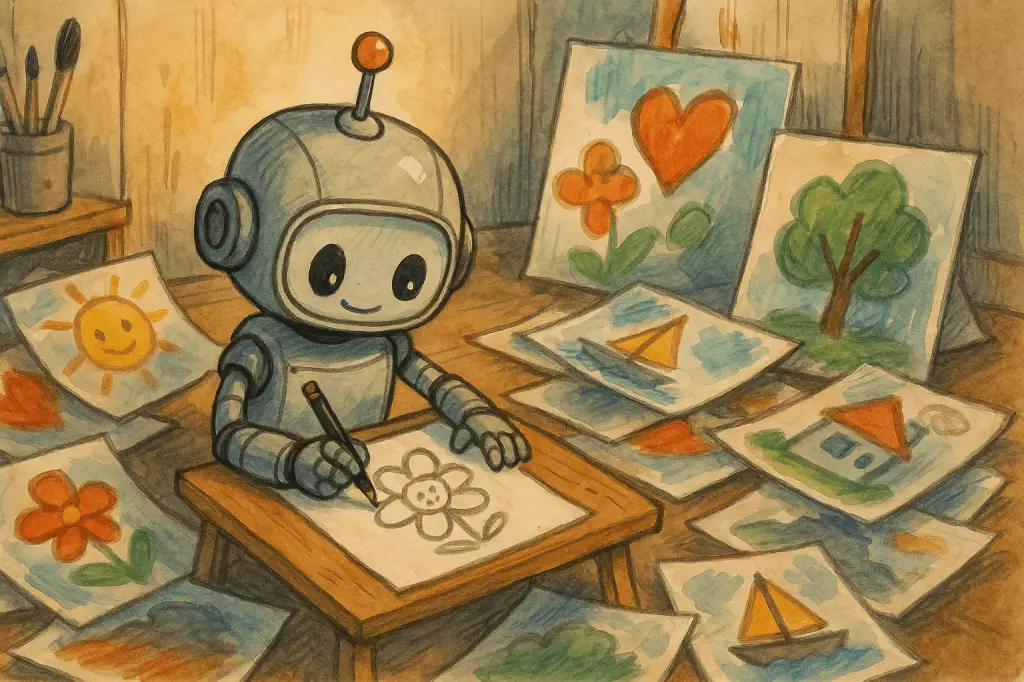OpenAI’s latest breakthrough in artificial intelligence is a game-changer for businesses and creative individuals alike. The integration of the gpt-image-1 model into its API signals a significant shift in how organizations can harness the power of AI-generated imagery. This innovation allows developers to seamlessly incorporate high-quality, professional-grade images into their products without needing to navigate away from their primary platforms. As AI technology continues to evolve, the possibilities for creative expression in various fields become increasingly tangible and actionable.
One of the standout features of this model is its demonstrated versatility. Beyond simply generating eye-catching visuals, the gpt-image-1 model can be fine-tuned to adhere to specific stylistic nuances and branding guidelines. This is particularly crucial for businesses that seek to maintain a strong and coherent brand identity across multiple channels. The idea that a single piece of technology can cater to diverse artistic directions—from whimsical Studio Ghibli inspirations to sleek corporate aesthetics—opens countless avenues for innovation.
A Cost Analysis: Balancing Investment with Creativity
While the capabilities of the gpt-image-1 model are undeniable, it does come with a financial consideration that potential users must carefully evaluate. OpenAI has structured its pricing based on token usage, an aspect that could present a barrier for some smaller enterprises and creative freelancers. With text input tokens priced at $5 per one million tokens and image output tokens costing an eye-popping $40 per million tokens, one must consider the cost-to-value ratio when utilizing this advanced technology.
Contrasting OpenAI’s pricing structure with competitors like Stability AI — which operates on a credit-based system — reveals a competitive landscape where cost management is paramount. It’s essential for users to weigh the benefits of superior image quality and versatility against the immediate financial implications. This tension between cutting-edge capabilities and cost-effectiveness will play a critical role in how widely adopted the technology becomes.
Challenges and Opportunities: Navigating Popularity
Despite the excitement surrounding the integration of image generation capabilities into existing platforms, popularity brings with it a set of challenges. As users flood social media platforms with AI-generated images — such as those inspired by the iconic works of Studio Ghibli — the technology’s rapid uptake can lead to trends that saturate creative spaces. This phenomenon raises questions about originality and the uniqueness of artistic expression in an age dominated by AI.
OpenAI’s CEO, Sam Altman, candidly addressed these challenges by remarking that their GPUs were “melting” under the strain of overwhelming demand. This humorous but sobering acknowledgment of the technology’s instant virality underscores the importance of balancing innovation with sustainable infrastructure. As more brands and creators leverage this technology, finding ways to maintain diversity in output while managing user expectations and server demands will be pivotal.
Real-World Applications: The Transformative Impact on Brand Strategies
Corporate giants and startups alike are eager to capitalize on the capabilities provided by the gpt-image-1 model. Case studies have already emerged illustrating how companies like Canva and GoDaddy are integrating this technology to enrich customer experiences. For instance, Canva’s exploration of the AI model enhances its suite of design tools, allowing users to generate unique visuals that align with their creative vision. Similarly, GoDaddy’s experimentation with AI-generated logo designs represents a significant leap in empowering small businesses to create distinctive branding without extensive graphic design resources.
Moreover, the inclusion of metadata from the Coalition for Content Provenance and Authenticity (C2PA) adds a layer of accountability in a world increasingly fraught with questions of ownership and authenticity. This aspect not only reassures creators that their works are properly accredited but also provides consumers with the clarity needed in understanding the origins of the images they interact with.
The Future: Bridging Creativity and Technology
As the landscape for AI image generation continues to evolve, one thing is clear: technology is redefining the ways we think about art and branding. The potential for enterprises to integrate AI-driven visuals into their ecosystems signifies a newfound empowerment for creators of all kinds. The era where businesses could only dream of world-class graphic design is rapidly transforming into one where those dreams can be realized in just a few clicks.
Indeed, the marriage of creativity and technology heralds an exciting chapter in business strategy and artistic expression. It invites us to imagine a world where the limits of creativity expand exponentially, driven by the tools we choose to adopt. With AI as a collaborative partner in the creative process, the future is not just bright; it’s bursting with possibilities.

